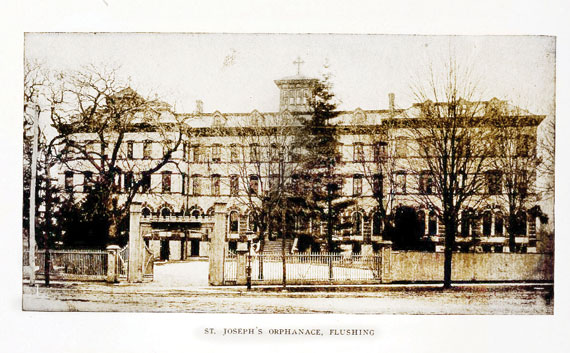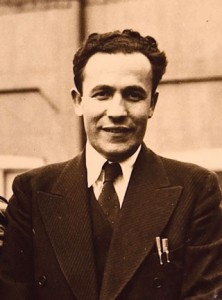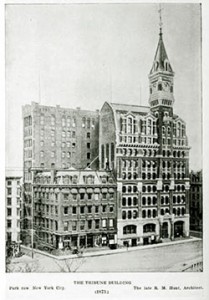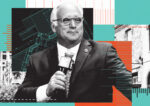Trending
This month in real estate history
This month in real estate history

1967: Queens rezoning OK’d despite objections
The city approved the rezoning of a residential block in Flushing, Queens, to allow for the construction of a large commercial project on the site, 48 years ago this month.
The Board of Estimate voted to rezone the block bounded by Union Street, Sanford Avenue, Kissena Boulevard and Barclay Avenue.
At the time, it was home to a convent of the Sisters of St. Joseph.
The $10 million development planned for the site (about $71 million in 2015 dollars), was a four-story, 300,000-square-foot building with a four-level parking garage accommodating 1,000 cars.
Locals, led by City Planning Commission member Beverly Moss Spatt, argued the project would create noise and traffic problems, unsettling what they described as a stable, middle-class neighborhood and force its inhabitants to the suburbs. The New York Times described opponents’ “tear-stained faces” as they left the meeting after the vote.
The commercial complex built on the site still stands, housing a variety of businesses and organizations, including coffee shops, medical offices, a state Department of Labor office and a Social Security office.
1936: Strike halts Manhattan and Bronx building
Astrike among 12,000 members of the Brotherhood of Painters, Decorators and Paperhangers shut down construction and renovation work throughout Manhattan and the Bronx, 79 years ago this month.

Louis Weinstock
The main demands were an enforcement of the union wage scale, $9 for a seven-hour work day (about $153 in 2015 dollars) and an end to what it called the “kick-back racket” within the industry.
Louis Weinstock, secretary of District Council 9 of the painters union, led the fight, arguing that employers, organized as the Association of Master Painters and Decorators, were receiving payments from their workers that undercut the wage scale. Employers nominally paid the full amount, but some workers broke rank from the union and paid back a part of the wage in exchange for getting chosen for jobs. Leaders claimed their members were being underpaid by $2 million a year ($34 million today).
To curtail the practice, the unions demanded the right to choose at least half the workers on a given job.
The strike lasted 10 days, ending with a one-year compromise agreement. Employers agreed to grant the unions the right to choose 25 percent of the workers on jobs in the two boroughs. And, if any employers were caught violating wage or hour provisions, the union gained the right to choose up to 50 percent of the workers on that site.
1903: Tribune Building expansion plans filed
Architects D’Oench & Yost and L. Thouyard filed plans to expand the New York Tribune Building, already one of the city’s tallest, to twice its original size, 112 years ago this month.

The New York Tribune Building
The nine-story building, called the “Tall Tower,” would grow more than 100 feet, to 18 stories. The work was projected to cost $350,000 (around $9 million in 2015 dollars).
The Tribune Building, designed by architect Richard Morris Hunt, was built in 1875 as a home for the New York Tribune newspaper. Located at 154 Printing House Square on Nassau and Spruce streets, the building was one of the world’s first high rises. In 1903, the clock tower at the top of the building stood 240 feet above street level.
The project would raise the tower to over 340 feet. The architects also planned to remove the main entrance steps, set the hall flush with the street, and add an elevator.
The impetus for the expansion was largely financial. Like other solid masonry towers — such as the Monroe, the Western Union and the Boreel buildings — the lower floors of the Tribune Tower, the most profitable in terms of rents, lost much space to pillars and supports. Adding extra floors would allow the owners to realize a higher income.
The planned renovation began later that year and was completed in 1905. The Tower was demolished in 1966 to make room for 1 Pace Plaza.




